(Re)open season
Virginia companies seek paths to reopening amid pandemic
Rich Griset //July 29, 2020//
(Re)open season
Virginia companies seek paths to reopening amid pandemic
Rich Griset //July 29, 2020//
RELATED STORY: Busch Gardens set to reopen Aug. 6.
Reclining against the Williamsburg greenery, the 180-foot-tall steel serpent awaits anyone brave enough to test their mettle against it. Measuring 3,300 feet in length and boasting a top speed of 73 miles per hour, it shares the name of a Roman temple dedicated to the gods: Pantheon.
Advertised as America’s fastest multilaunch roller coaster, Busch Gardens Williamsburg’s newest attraction features zig-zag turns, camel-back hills, a “Top-Gun stall” and an outer-banked curve destined to give riders an exhilarating lift out of their seats.
Or, it would do all of that if Busch Gardens had opened as planned this summer. Scheduled for a 2020 completion date, construction on Pantheon halted while the theme park navigated plans for reopening in the midst of the coronavirus pandemic.
Although Virginia entered Phase Three of Gov. Ralph Northam’s “Forward Virginia” plan to reopen the state’s economy on July 1, its stipulations limiting amusement parks to no more than 50% occupancy or 1,000 total patrons were a nonstarter for Busch Gardens, which said operating under those restrictions wouldn’t be financially feasible. (Kings Dominion theme park in Doswell made similar statements and also was not expected to reopen in July.)
“We haven’t found a way quite yet, based on the current guidelines, that would allow us to reopen, but that dialogue continues,” says Kevin Lembke, park president of SeaWorld Parks & Entertainment’s Busch Gardens Williamsburg, which was originally scheduled to open for the season in mid-March. “We’re certainly anxious to get our business back open, welcome our employees back [and] welcome our guests back.”
Lembke isn’t alone in his desire to reopen. Even as several states experienced record coronavirus surges in July, many Virginia businesses were impatient to return to business as usual. And with Virginia’s cases deemed at an acceptable level, Northam was keeping the commonwealth moving toward reopening for commerce in July, following the economic crisis caused by the nationwide pandemic-driven shutdowns that began in mid-March.
But restarting a business isn’t as simple as flipping a switch, and amid the pandemic, business owners and their employees must adapt to new routines, keep up with guidance from various governmental entities and contend with potential legal liabilities.
And as businesses come back to life in Virginia, what will the new normal look like?
Past glory
Heading into the pandemic, America was on a roll. Riding the longest stretch of economic expansion in United States history, the stock market was soaring and the jobless rate was the lowest it had been in half a century.
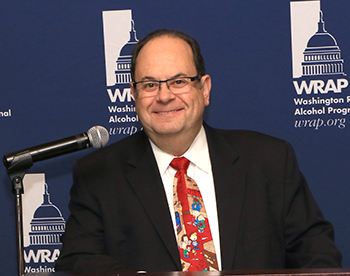
Gary Cohen, executive vice president of operations for Maryland-based restaurant chain Glory Days Grill, which operates 15 locations in Virginia, can certainly attest to that. In the past five years, Glory Days has grown from 24 locations to 38 and experienced same-store year-over-year sales increases of 3% to 4%.
Then COVID-19 ground everything to a halt for the family-friendly sports bar franchise.
“It was devastating,” Cohen says. “I’ve been in the restaurant business for 40 years professionally, 14 of them with Glory Days, and I have never, ever, ever experienced anything like this.”
According to a May survey from the National Restaurant Association, 83% of Virginia restaurants that hadn’t permanently closed reported that they had laid off or furloughed employees since March.
Cohen says that Glory Days Grill had to reinvent its entire business model in response to the pandemic. Facing no easy choice, Cohen had to lay off 1,645 employees at its 21 company-owned locations and shift to a food-to-go model. With Phase Three underway, Glory Days no longer has limits on indoor patrons, as long as tables remain a socially distanced six feet apart. And although many Glory Days locations have erected tents in their parking lots to create extended patios, business still isn’t what it was.
“Every day that we’re open and we’re not doing 100% of last year’s sales, we’re losing money,” Cohen says. “Not only are we losing money, but we have to figure out how to pay the bills of the last [few] months that accumulated.”
In addition to beefing up its cleaning regimen and having employees wear masks, Cohen says Glory Days had to reduce its menu by 20% due to food supply shortages.
Eric Terry, president of the Virginia Restaurant, Lodging & Travel Association (VRLTA), says that Glory Days’ experience is typical of many restaurants in the state. Hotels have taken a hit as well. For the week of July 5-11 this year, Virginia hotels saw a 50% revenue decrease and a 38% occupancy decrease, compared with the same time last year.
The state has lost 36,667 hotel-related jobs and 86,821 jobs supporting the hotel industry because of the pandemic, according to the American Hotel & Lodging Association.
“The recovery on the hotel side is going to be very, very slow,” Terry says. “I don’t think we’ll return to normal travel patterns or hotel occupancy until almost a year from now.”
From fist bumps to toe-taps
Retailers that normally rely on foot traffic have had to adjust their business models to adapt to the new paradigm. Finch, a women’s clothing boutique in Charlottesville, launched an e-commerce site during the pandemic shutdown. A staple of The Corner since 2001, Finch caters to University of Virginia students, professors, locals and hospital workers.
Since it reopened in May, Finch has allowed only 10 customers at a time in its store, even though it’s allowed as many as 40 in Phase Three. Masks are mandatory for customers and employees, and sanitizer stations are available.
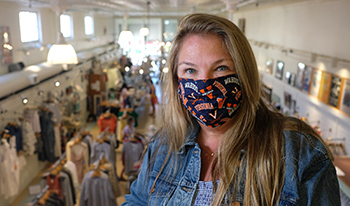
“We are allowing people to try things on,” says owner Jocelyn Churchman. However, “we’re not accepting any returns right now.”
If someone tries on an article of clothing and chooses not to buy it, Churchman says, Finch workers spray the item with sanitizing spray and keep it off the sales floor for 24 hours.
Amy Rutherford, owner of home furnishings and gift store Red Barn Mercantile and paper store Penny Post in Old Town Alexandria, says she’s also beefed up online offerings to help drive business.
“We used our marketing channels, our e-newsletter – which we’ve been cultivating for some time – [and] our social media to let people know that we’re still here,” Rutherford says.
Some of the added online offerings include virtual trunk shows and Zoom calls during which Rutherford interviews designers about the work that she features in her stores.
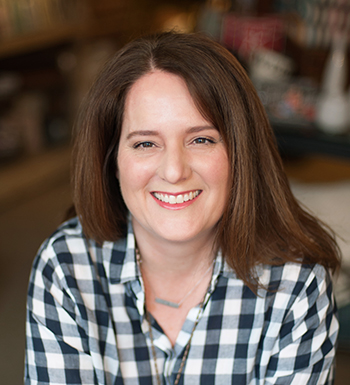
Because Rutherford’s stores are in Northern Virginia, they were initially delayed from entering Phase One, which allowed 50% occupancy based on a store’s lowest occupancy load. Rutherford waited even longer to welcome back customers, however.
“We felt it was more prudent to close our stores to do what we could to flatten the curve,” she says. “We’ve been a little cautious about reopening.”
In Phase Three, Rutherford is allowing only eight people inside Paper Post and 12 people inside Red Barn, including staff. Masks are required by state mandate, sanitizer stations have been posted and the stores no longer accept cash.
Gyms and fitness centers also are trying to get back on their feet. Maria Hayden, a coach and marketing manager at CrossFit Harrisonburg, says her gym was closed for two months in response to the pandemic. Early on, the gym loaned workout equipment to members and held online workout classes via Zoom.
As Virginia began to reopen, CrossFit Harrisonburg was able to hold socially distanced outdoor classes during Phase One. During Phase Two, they were allowed to have patrons inside the gym at 30% capacity.
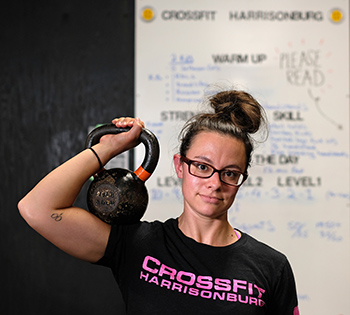
Hayden says members were excited to return. “A lot of people do it for the community,” she says. “It’s not as motivating to work out by yourself, and it’s not as fun.”
Phase Three isn’t much different than Phase Two for CrossFit Harrisonburg, due to social distancing requirements and the size of the gym.
“There’s definitely a new normal,” says Hayden, who recalls that before the pandemic, trainers would end workouts by giving class members high-fives and fist bumps. Now, she says, “we’ve resorted to toe-taps, so we just kind of give foot-fives to each other.”
Pandemic perils
No matter how careful businesses are with reopening, however, there is always the threat that the virus will rear its ugly spike proteins.
Several restaurants have had to close temporarily off and on in recent months, due to employees testing positive for coronavirus.
And Bassett Furniture in Henry County, which resumed production in limited capacity in April, had to close its corporate offices for about a week in June after an employee tested positive for coronavirus.
Not even the state government is immune from this dilemma. The Virginia Employment Commission, which disburses out state unemployment benefits, was forced to shut down its headquarters in Henrico twice because of COVID-19 cases. Two positive cases were identified on June 18 and two more were identified on June 30.
Most of the office’s 350 employees were teleworking, but VEC still closed the office and enacted deep-cleaning protocols. All remaining staffers were sent home, and those who came in contact with infected people were required to self-quarantine at home.
With so much uncertainty around reopening, the Virginia Chamber of Commerce conducted a survey of more than 1,000 business leaders to better understand their concerns.
The survey, published online as the “Blueprint for Getting Virginians Back to Work,” found that 37% of Virginia businesses surveyed are having cash flow problems and one in five probably would be unable to reopen for business during the pandemic.
“That 20% number was higher than we expected,” says Barry DuVal, CEO of the Virginia Chamber of Commerce, who says the blueprint report — which also provides best practices guidance — has been viewed tens of thousands of times since its early June release.
Businesses responding to the survey said that restoring consumer and worker confidence was their No. 1 concern, followed by potential legal issues stemming from the pandemic.
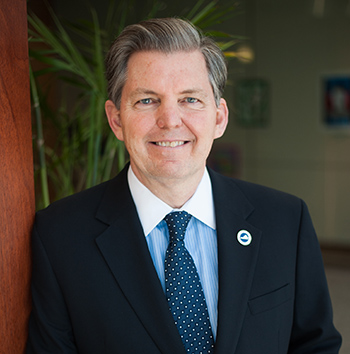
“One of the biggest concerns that we’re hearing from businesses is liability concerns,” says DuVal, noting that hundreds of COVID-19-related lawsuits have been filed against employers across the country.
In mid-July, Virginia became the first state to adopt emergency workplace safety measures, including mandating mask wearing and social distancing, as well as requiring employees to be notified if a coworker tests positive for coronavirus. Businesses in violation could face fines up to $130,000.
Cate Huff, an employment lawyer with Roanoke-based Gentry Locke Attorneys, says that businesses “can proceed with reopening, but must do so with caution,” and with an understanding of state regulations and CDC guidelines for reopening.
“Legally, it’s going to be tough to prove that COVID-19 was contracted in any one location because it’s so prevalent,” says Huff. “Practically, however, I think businesses need to make sure that … they’re doing everything they can to provide the safest environment that they can.”
If an employee doesn’t want to return to work, Huff advises employers try to reach out to discuss it with the employee and accommodate them, if possible.
Overall, she says, employers need to stay abreast of local, state and federal news and any changes in regulations.
“It’s a dynamic situation,” Huff says. “Coronavirus … and the way that it impacts people and business is changing. Employers should remain vigilant.”
What about the children?
One hurdle workplaces must definitely navigate during the pandemic is child care. With many school systems around Virginia planning to hold either part-time in-person instruction or full-time digital classes in the fall, workplaces will need to be flexible in meeting employees’ needs, says Joseph W. Harder, an associate professor of leadership and organizational behavior at the University of Virginia’s Darden School of Business.
“If you want a truly great organization,” he says, “… think more about flexibility than money.” Whether an employee is faced with child or elder care needs, Harder says, businesses need to acknowledge “that this is a difficult time and people need support in some way.”
He also worries teleworking could have a negative impact on workplace culture and socialization. With less visibility, Harder ponders, will those who work digitally lose out on landing potential raises, promotions or choice assignments? And without the proverbial water cooler, they also may lose the socialization benefits of a physical workplace. “I think that’s a huge potential chasm between those who are there in person and those who are not,” he says.
Many companies, however, are finding teleworking has raised worker morale and increased productivity.
When the pandemic began, Chesterfield County-based custom computer manufacturer Velocity Micro shifted its administrative staff to teleworking, while its production team went to a staggered shift of working either 7 a.m. to 3 p.m. or 3 p.m. to 9 p.m. to promote social distancing, says Josh Covington, director of sales and marketing.
With the company’s second quarter sales up 20% over the previous quarter, the plan has worked so well that Velocity Micro has largely stuck to the model after Virginia entered Phase Three.
PB Mares LLP, an accounting firm with eight offices in Virginia, has also found success teleworking.
“We are able to work remotely much more effectively than we ever thought we could,” says PB Mares CEO Alan Witt.
The accounting firm has created its own system for returning to the office, based on the prevalence of coronavirus cases in each office location. Some of PB Mares’ offices are now entering their own second phase of reopening, meaning that clients are allowed in the office, and conference rooms and common areas can be used with limited capacity. Masks are required in the office, as are self-temperature checks. Cleaning procedures have been enhanced, and Plexiglas barriers have been added in reception areas and conference rooms.
Nevertheless, Witt says, after the pandemic ends, companies that don’t allow their employees the option to telework are “going to [be at] a competitive disadvantage [versus] … other firms that figure out they’re able to do business by giving people a more flexible work schedule.”
Thrown for a loop
Considering its draw as a tourist magnet and that it employs a mix of 4,500 full- and part-time employees, Busch Gardens’ closure has a ripple effect on the economies of surrounding Williamsburg and James City County.
“We understand those impacts even beyond the park,” says Lembke, Busch Gardens’ president. “That’s why we’re working so hard to find a solution to get back into business.”
Lembke is eager to reopen, arguing that Busch Gardens has hundreds of acres — plenty of space for social distancing — and most of its attractions are outdoors, factors he thinks the state government should have taken more into account when considering attendance limitations.
“What’s key for our type of property is we have the space in order to provide those physical distance requirements for our guests. We feel confident in our ability to operate in a safe manner,” says Lembke, who attended the reopening of Busch Gardens Tampa in early June. When Busch Gardens Williamsburg reopens, he plans to implement many of the same safety features he saw at the park in Florida: visitor temperature checks, required face masks, social distancing, heightened cleaning and added signage.
Until then, though, the unfinished Pantheon must wait to thrill riders with the purported power of the Roman gods.
Subscribe to Virginia Business.


















